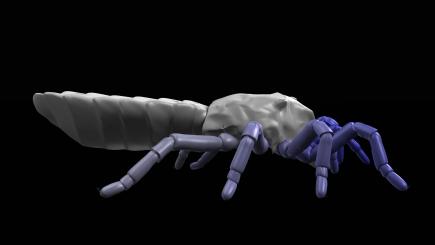A 410-million-year-old arachnid has been brought into the 21st century in a new University of Manchester video.
Fossils from the London’s Natural History Museum were used to recreate the walking motion of the extinct creepy-crawly in a joint-project with The Museum fur Naturkunde of Berlin.
Scientists had used the fossils to work out the eight-legged motion of the limbs of the ancient arachnid – one of the first-known predators – and compared the extinct arachnid’s movements to modern-day spiders.
“When it comes to early life on land, long before our ancestors came out of the sea, these early arachnids were top dog of the food chain,” said author Dr Russell Garwood, a palaeontologist in the University of Manchester’s School of Earth, Atmospheric and Environmental Sciences.
“They are now extinct, but from about 300 to 400 million years ago, seem to have been more widespread than spiders.
“Now we can use the tools of computer graphics to better understand and recreate how they might have moved – all from thin slivers of rock, showing the joints in their legs.”
Researchers used an open source computer graphic program named Blender to compare the two species walking side-by-side.

YOU ONLY LIVE TWICE: The ancient arachnid has been recreated by scientists
Jason Dunlop, curator at the Museum für Naturkunde, Berlin also adds: “What’s really exciting here is that scientists themselves can make these animations now without needing the technical wizardry – and immense costs – of a Jurassic Park-style film.
“When I started working on fossil arachnids we were happy if we could manage a sketch of what they used to look like; now we can view them running across our computer screens.”
The video is part of a special collection of papers on three-dimensional visualisation and analysis of fossils which was published in the Journal of Paleontology and featured in a special issue on Wednesday July 2.



